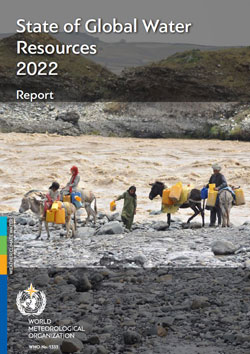
As a result of climate change and human activities, the hydrological cycle is out of balance. This is the key message of WMO’s State of Global Water Resources report 2022. After the successful pilot of last year, the present report has been extended to include information for various variables of the global water cycle such as river discharge, groundwater, evaporation, soil moisture, inflow to reservoirs etc. In addition, it gives an overview of major extreme hydrological disasters in 2022.
To achieve maximum global coverage and bridge data gaps, the report used a combination of in situ data, global hydrological and land surface modelling systems and remotely sensed data. For the validation of river discharge data, observational river discharge data collected from the National Hydrological and Meteorological Services (NHMSs) and GRDC has been used. Ulrich Looser, the former head of GRDC, has been involved in the preparation and review of the recent assessment report.
Discharge trends in 2022 from the “State of Global Water Resources 2022” report. Source: WMO Discharge trends in 2022 from the “State of Global Water Resources 2022” report. Source: WMO The assessment of river discharge and reservoir inflow patterns showed that over 50% of global catchment areas and reservoirs displayed deviations from typically normal conditions. Similar to 2021, most of these areas were drier than normal, while a smaller percentage of basins displayed above or much above normal conditions. More than 60% of major water reservoirs saw below or normal inflow, posing a challenge for providing water to all users in an increasingly variable climate.
Although for the present assessment a significantly greater amount of data was available in comparison to 2021, the report highlights the lack of accessible verified hydrological data, in particular from Africa, the Middle East and Asia. To adapt better to changing hydrological regimes and the global variability in the water cycle, more investments in monitoring and data sharing are needed.
Further information and the full report are available at the website of WMO.
Back to top